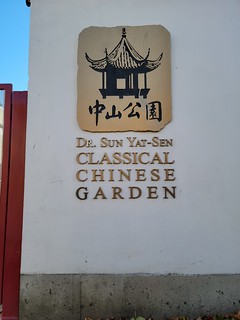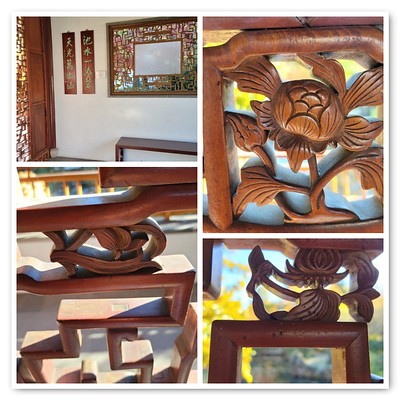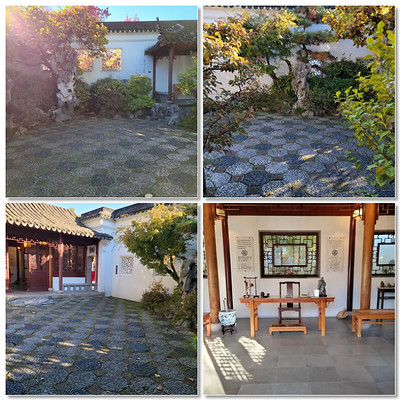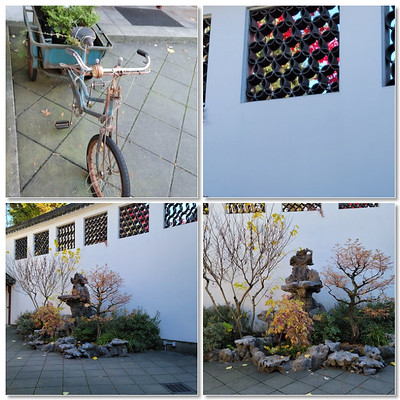Scholar’s Secret Scavenger Hunt
There are bat shapes all over the Garden. Bats symbolize good luck in Chinese because the word for bat sounds the same as the word for fortune or blessing. The door handles are also bats – a docent was giving a tour while I was in there and she whispered to me to be sure and touch the door handles to bring good luck. Near the Jade Water Pavilion is the Heavenly Well, there are bat shapes on the floor, in the window shapes, and on the pointed roof tiles.

The Garden was built in 1986 by a team of Chinese artisans who used the method and materials used during the Ming dynasty. So, no power tools, nails, screws or power tools. They used mortise and tenon joins to slot together wooden beams.

There is a hidden cave under the rock mountain. The Scholar designed his Garden as a miniature version of nature. Caves and mountains were mythical places where the Immortals lived. The cave invites the Immortals or “good spirits” to live there. Dragons can also inhabit the cave, to see a Dragon was considered good luck.

The Scholar’s Face can be seen if you look closely at the wooden screen in the Jade Water Pavilion. A Scholar was a highly educated man who worked for the Emperor. He had to pass very difficult exams that tested his education in literature, the arts, and philosophy.
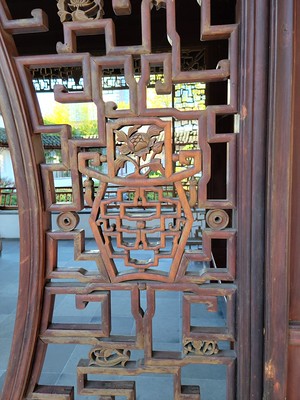

Plum blossom symbolizes spring; Orchid, summer; chrysanthemum, autumn; and bamboo, water. Together these four flowers are referred to as the Four Gentlemen and can be found in the Jade Water Pavilion. The Four Gentlemen also represent the ideal characteristics a man should have: courage (plum blossom), moral virtue (orchid), loyalty (chrysanthemum), and resilience (bamboo).
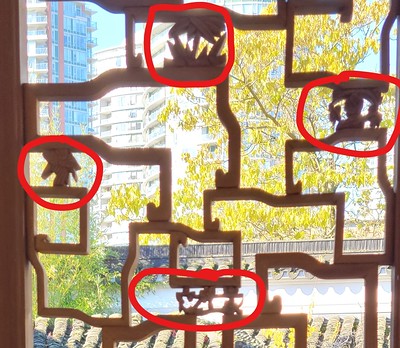
The railings were designed for people to sit sideways and lean against them so you can look at the view whilst chatting comfortably with a friend. The railings are all anchored by these hooks, I assume so you can remove or move around the railings.

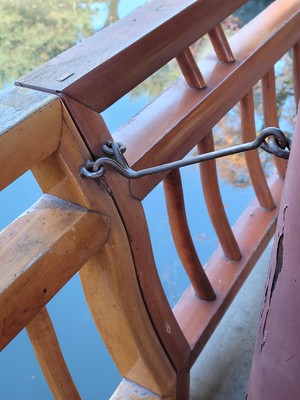
Dragon shapes and symbols represent The Emperor, good luck, power, and greatness. The Chinese dragon has the body of a snake and is covered in scales like a fish. The roof of the zigzag corridor has tiles that represent the snake-like body of the dragon.
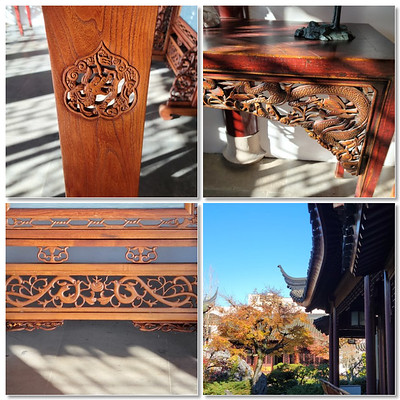
Turtles represent long-life. There are large rocks that act as steps throughout the Garden. The shape reminds us of a turtle shell. Anyone who steps on these rocks will live forever. During the summer there are also turtles living in the pond. The Tai Hu rocks all come from Lake Tai in China. Made of limestone and naturally formed by erosion, their interesting shapes ask us to imagine what they may be.

